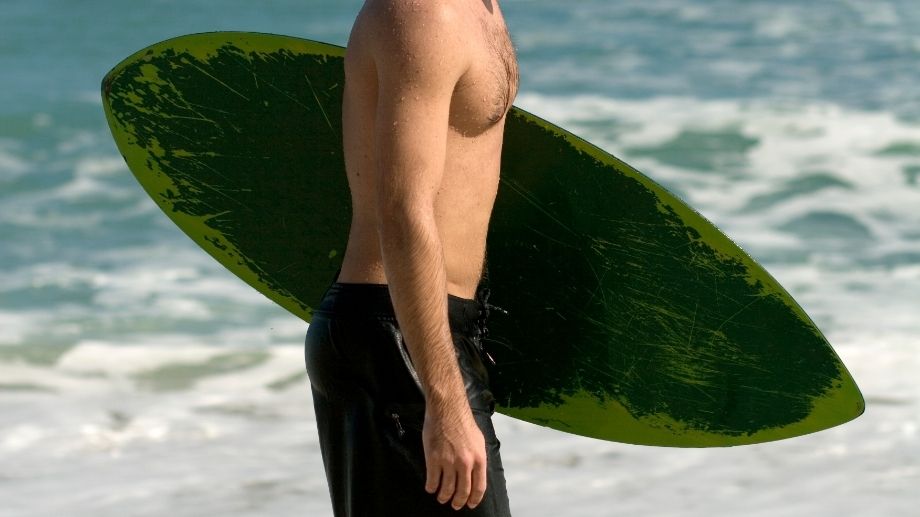When you're looking to buy a skimboard there are a wide variety of shapes and types to choose from. It can get really confusing if you're not sure what you're looking for.
Even the smallest changes in skimboard design can have big impacts on the performance of the board.
The majority of design decisions come down to distance when skimming and manoeuvrability on the wave. Generally speaking if you improve one you decrease the other.
In this article we'll look specifically at the difference skimboard shape options and teach you the pros and cons of each design so you can understand which skimboard is going to be best for you.
Wood vs Foam Skimboard
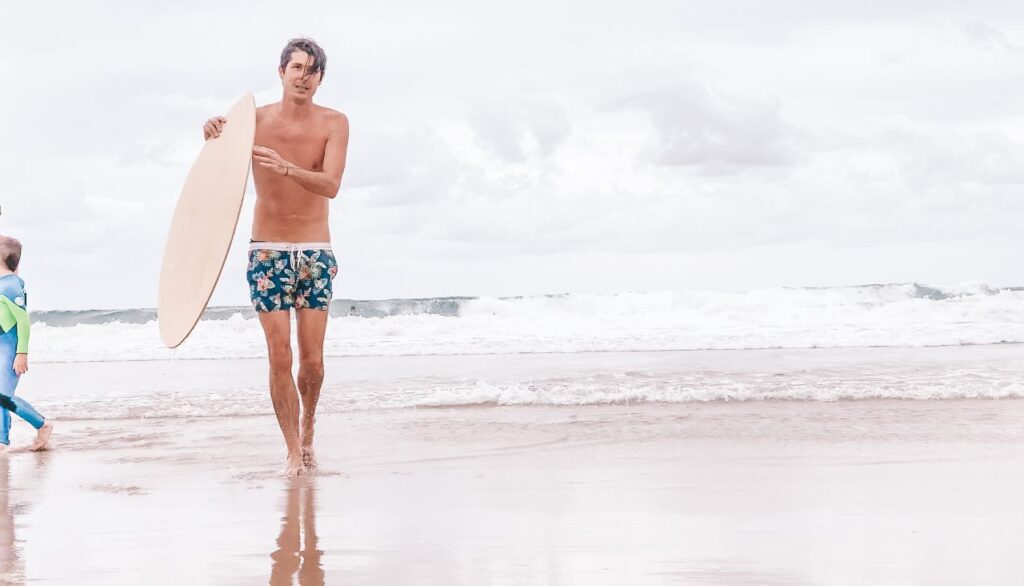
Wooden skimboards are cheap and are NOT high performance boards. Wooden boards are too heavy, not buoyant enough and also generally too small and flexible to skim as well as foam boards.
For a better understand of what type of board to get read our guide on foam vs wooden skimboards or everything you need to know about wooden skimboards.
For these design differences we'll be predominately looking at foam skimboards as these are the highest performing boards that the pros use and the shape differences do make an impact on how well they ride.
These shape difference will still effect wooden boards, but the performance on them is so low anyway you won't notice a huge difference.
Flatland vs Wave Riding
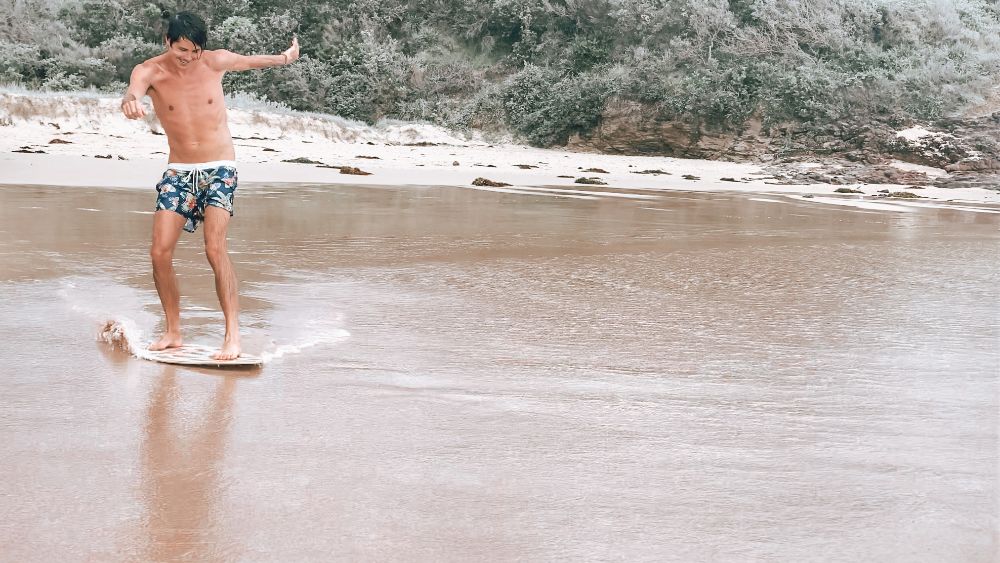
Flatland skimboards are wider, rounder and more uniform than wave riding skimboards which have a more focused point and a tail with harder edges.
This is because if you're skimboarding and not trying to catch waves then you want to maximise the distance your board will skim and turning is not super important.
Flatland skimboards are usually symmetrical with no obvious front or back. This allows you to do and land tricks in both directions without issue.
The 2 most common flatland skimboard shapes are called Streamline and Proto.
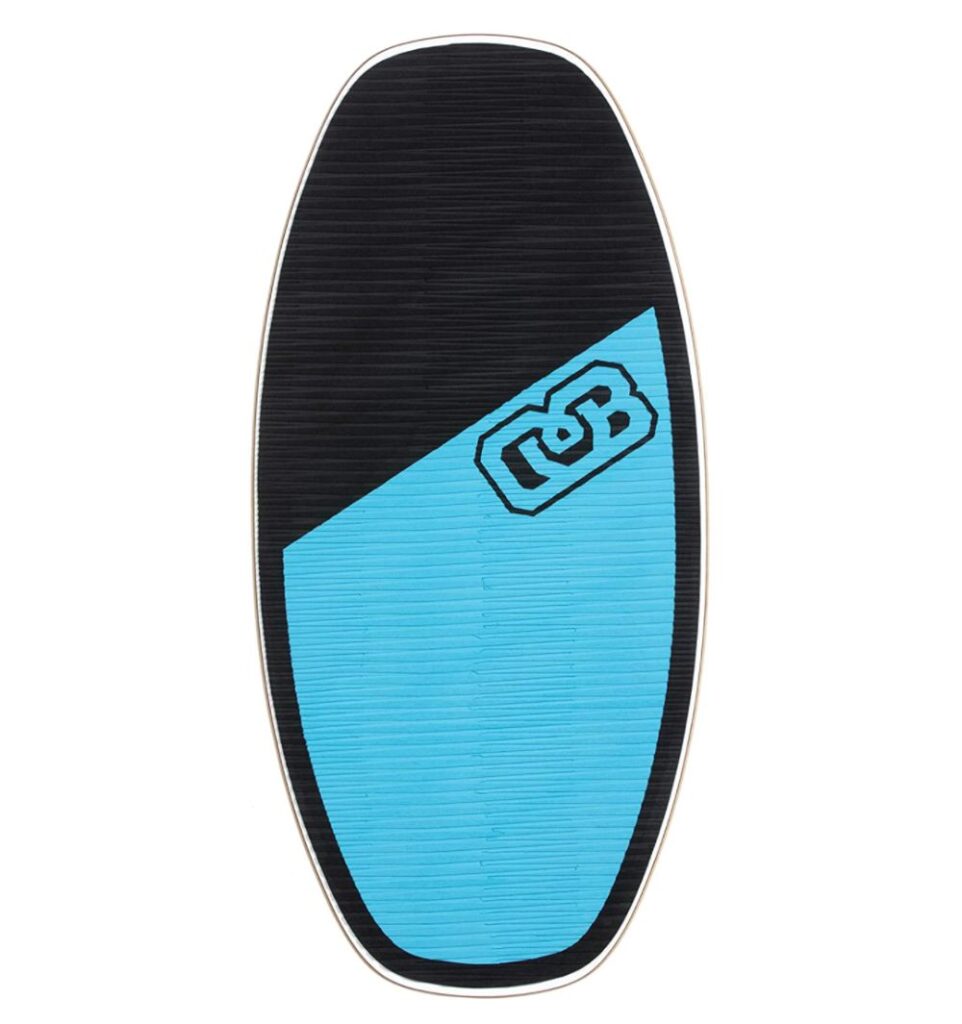

Both boards pictured above are from DB Skimboards
However, if you're trying to catch wave then it's important that once you're on the wave you're able to make sharp turns and ride the wave effectively.
These skimboards will be thinner, have a pointed directional nose, sharper edges and a thinner tail which allows you to dig into the waves and change direction quickly.
You do sacrifice some skimming distance in order to get these advantages but if you're trying to ride waves then this tradeoff is absolutely worth it. We'll go into detail about the different surfing skimboard shapes in a bit.
So you'll instantly notice the difference between boards designed for flatland skimboarding vs boards that are designed for wave riding and you'll want to make sure that you pick the right one.
Rocker

The “rocker” refers to how curved or bent a skimboard is.
A flatland skimboard or one designed for smaller waves will have a small of “shallow rocker” which means the board doesn't curve much at all. This gives you maximum distance over flat water.
A skimboard designed for catching waves will usually have a bigger of “steeper rocker” which means the board is much more curved.
This allows you to skim over rougher waters without losing as much speed or having the edge of your board catch on some chop and slow you down.
Tail
The next biggest difference you'll notice in difference skimboards designed for wave riding is the tail design.
These tail designs all aim to achieve the same thing, which is giving you the ability to turn sharply on a wave, they just go about it in different ways.
When riding waves surfers use the fins in their boards to change direction on the wave and do their manoeuvres. However, skimboards have no fins so they rely on the rider placing their weight on the back or sides of the board and digging into the wave using the edges of the board to create traction.
No tail is inherently better than another but some people just prefer one design over another.
There are only really 2 primary shapes for a skimboard tail designs. There are other tail designs like square, fish, rounded square etc but these are generally only seen in surfboards and are rarely (if ever) seen on skimboards.
The 2 primary tail designs are:
Pin Tail
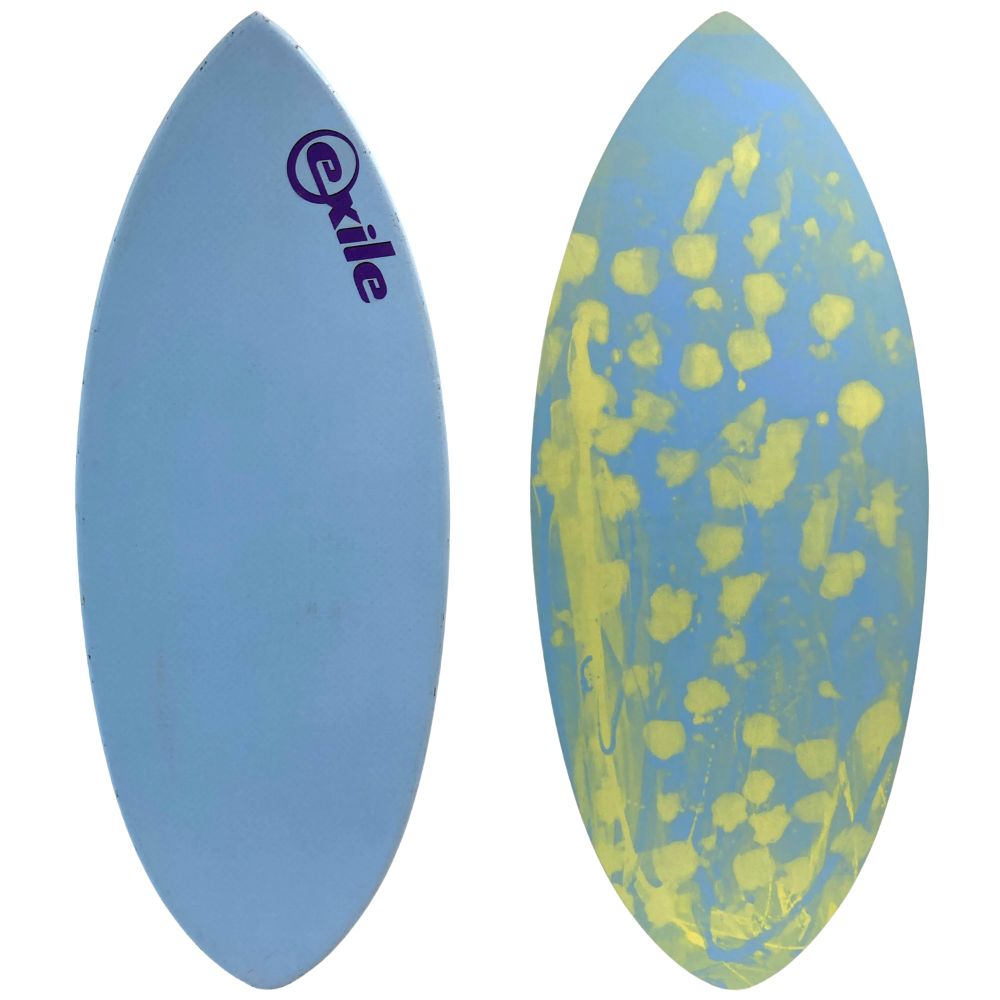
The pin tail design has the base of the board shaped towards a sharp point.
This is the most common skimboard tail design and for good reason, it is simple and it works really well.
Your foot is usually naturally centered on the board and the pin tail design allows you to perform sharp turns in either direction with relative ease.
Swallow Tail
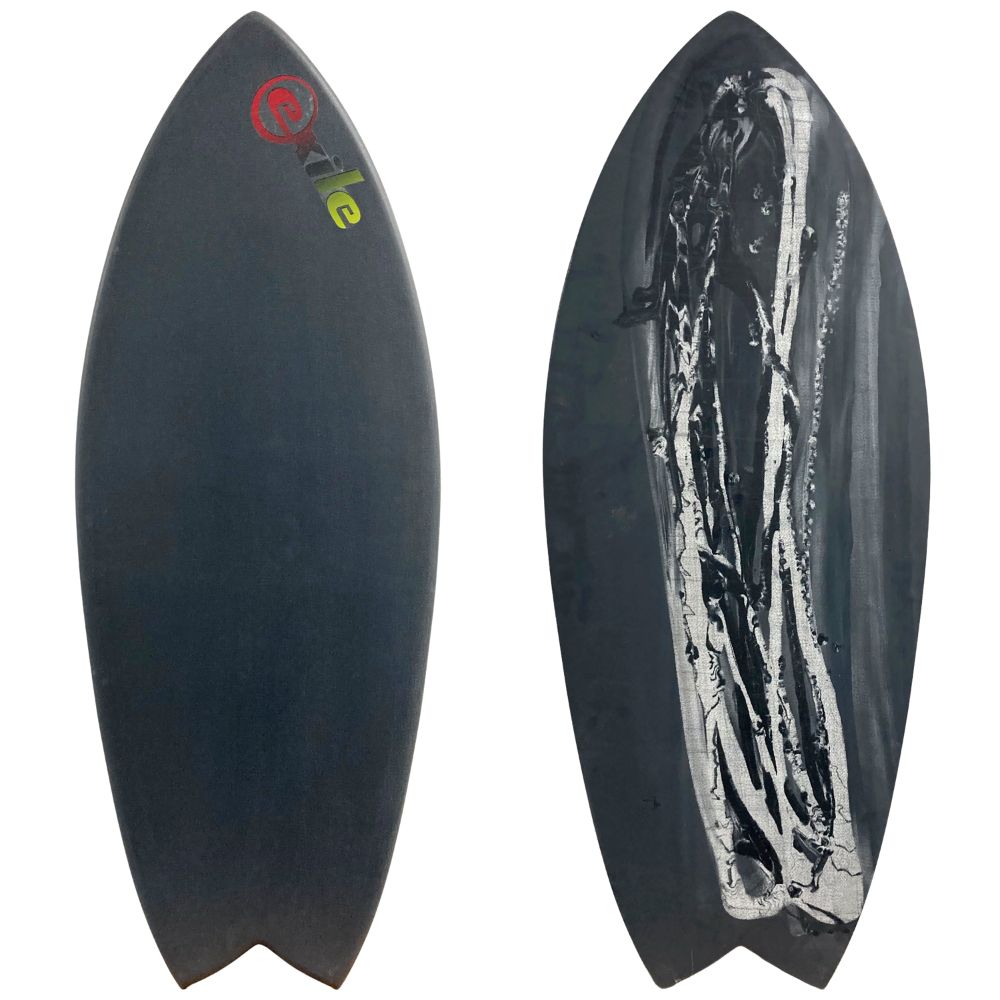
The alternative tail design you see in a few professional skimboards is the swallow tail design.
This design effectively gives 2 pin tails, one on either side of the board.
The wider surface area of the edge of the tail can make it better for planing, especially when on smaller waves, however the dual pin design means that when you want to make sharp turns you can.
This design gives plenty of speed while not sacrificing turning ability. Plus, in my opinion, it looks really cool.
Width

Another major design choice is the sideways width of your board.
Wider boards are better for skimming faster and across longer distances as they increase the contact area of your board and also generally have more volume making them more buoyant.
The sacrifice here is that the wider the board is the harder it becomes to turn once you get onto the wave.
Wider boards are mainly used either by larger and heavier riders who need the extra surface area and volume or by skimboarders riding small waves without much power where the extra volume really helps.
However, if you're riding larger and more powerful waves close to shore then a thinner board will give you a better ability to turn on the wave.
Size
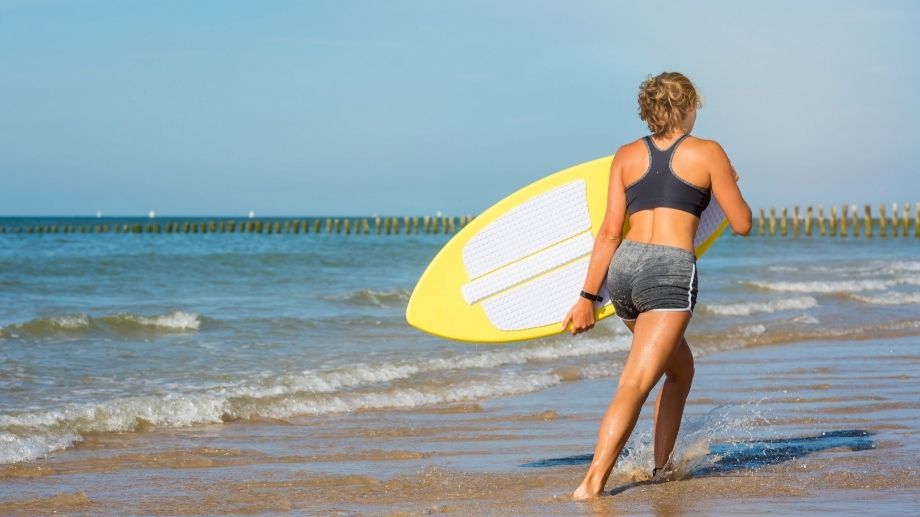
Size is a major consideration you need to take into account when choosing a board.
Just like width the larger the board the farther and faster you will skim but the harder it will be to turn on waves.
So you want a board that is big enough to get out to the waves but not so big it hinders your wave riding ability.
I talk more about choosing the right size in my guide for the best skimboards for beginners but the general recommendation from pros and board shapers alike is that you should get a board that reaches up to your sternum (or nipple line).
Measure yourself and then look for a board that will come up to your sternum. If it doesn't Austin Keen (pro skimboarder) recommends you go a little bigger rather than smaller. He says:
“If you're unsure always go a little bit bigger. It's better to have a board that's a little bit on the bigger side than to be too small. If anything you're just going to be able to get a little further out at the expense of not being able to turn as fast”
Your weight is also a consideration, with heavier set individuals needing larger boards than skinny people.
Also wave size is another thing to consider when choosing your board size. If you're riding small waves then you'll need a larger board and if you're riding big waves you might want a slightly smaller board.
It's only once you're a professional skimboarder that you may want to downsize below the recommended size in order to gain increase turning ability on the wave. But by that point you'll be very attuned to the performance differences of each board and the decision should be simple for you.
Below is a size guide by popular skimboard manufacturer Exile Skimboards:

Thickness
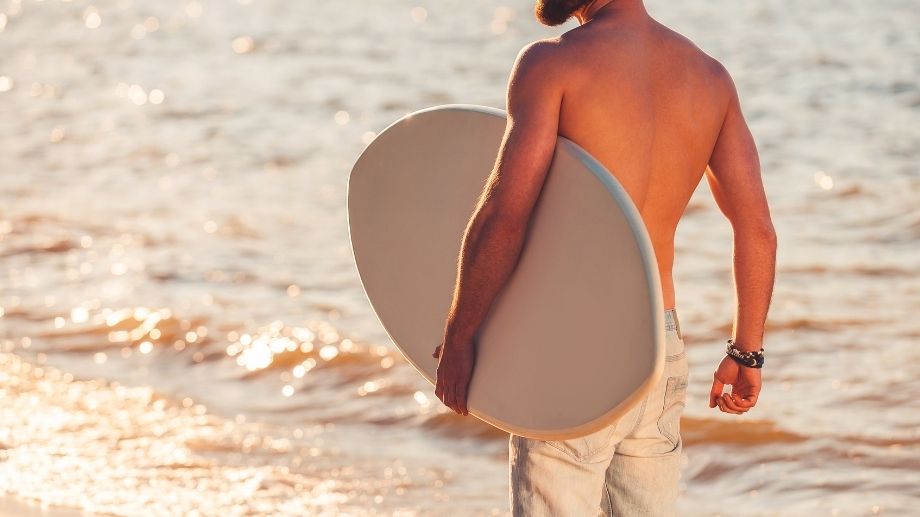
The last major consideration is the thickness of the board.
The thicker the board is the more buoyant it will be and the faster and farther it will skim compared to thinner boards.
There are 3 main thickness variations with 2 being most popular
5/8″ Thick
This is the thickness of the professional boards that the pros ride. It's thick enough to give good buoyancy but thin enough to give you maximum maneuverability on the waves.
This is going to be the right thickness of the majority of people buying boards who are serious about skimboarding. Especially if you are riding strong powerful waves.
There are a few exceptions which we will talk about for the next size.
3/4″ Thick (aka. 6/8″)
The other most common thickness is 3/4″
This thickness is best for beginners, heavier set people and people skimboarding smaller waves who need the extra buoyancy.
If you are riding really small waves that are further out then you'll want to get this thickness of board. Otherwise you'll likely just want to go with the 5/8″
Also, for beginners this thickness will make getting onto waves in the beginning easier but as you improve you may want to upgrade to a thinner board.
3/4″ Tapered to 5/8″
Less common but still available is a 3/4″ thick board that is tapered to a 5/8″
This is a middle ground where you get some extra buoyancy for longer skimming distances or help getting onto smaller waves but there isn't as much of a sacrifice when it comes to turning on the wave.

